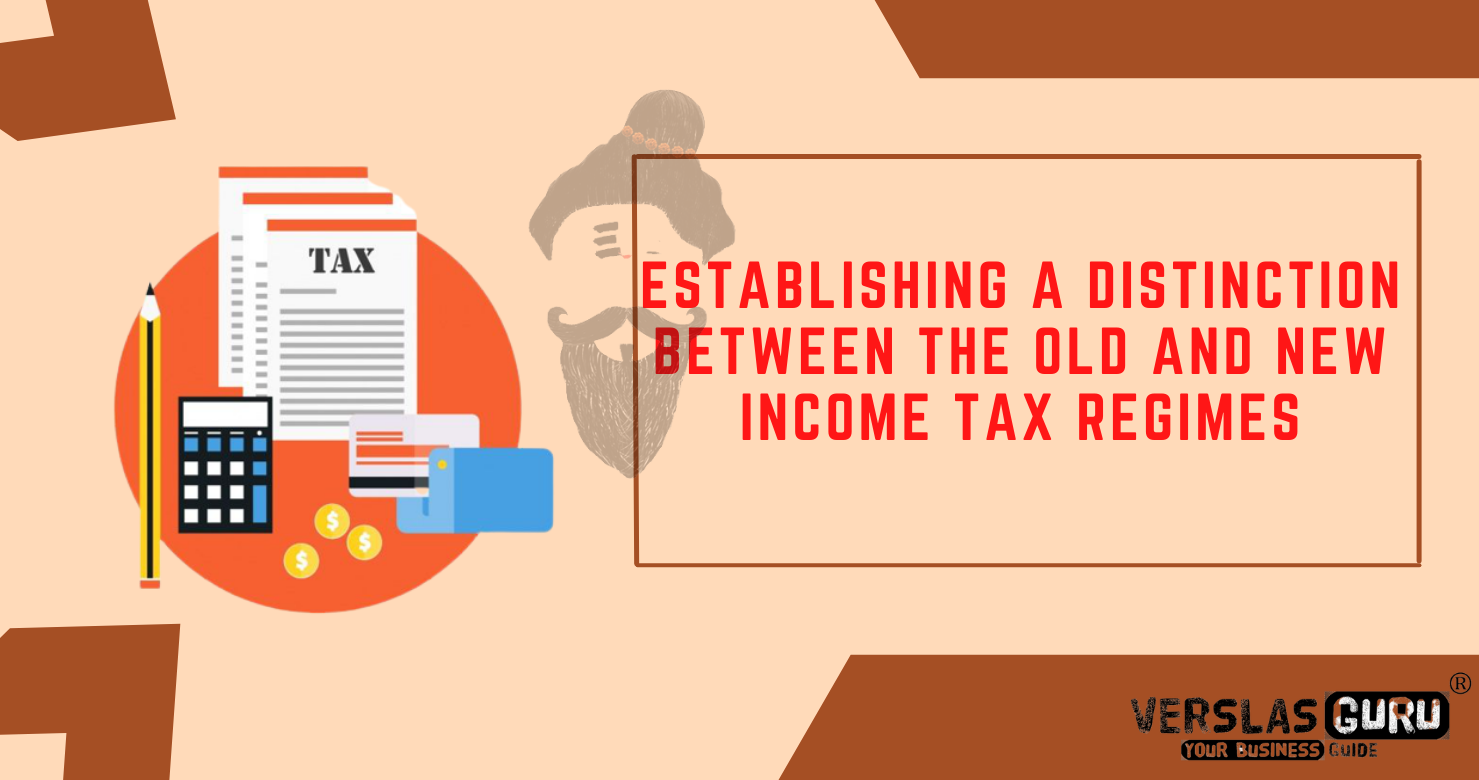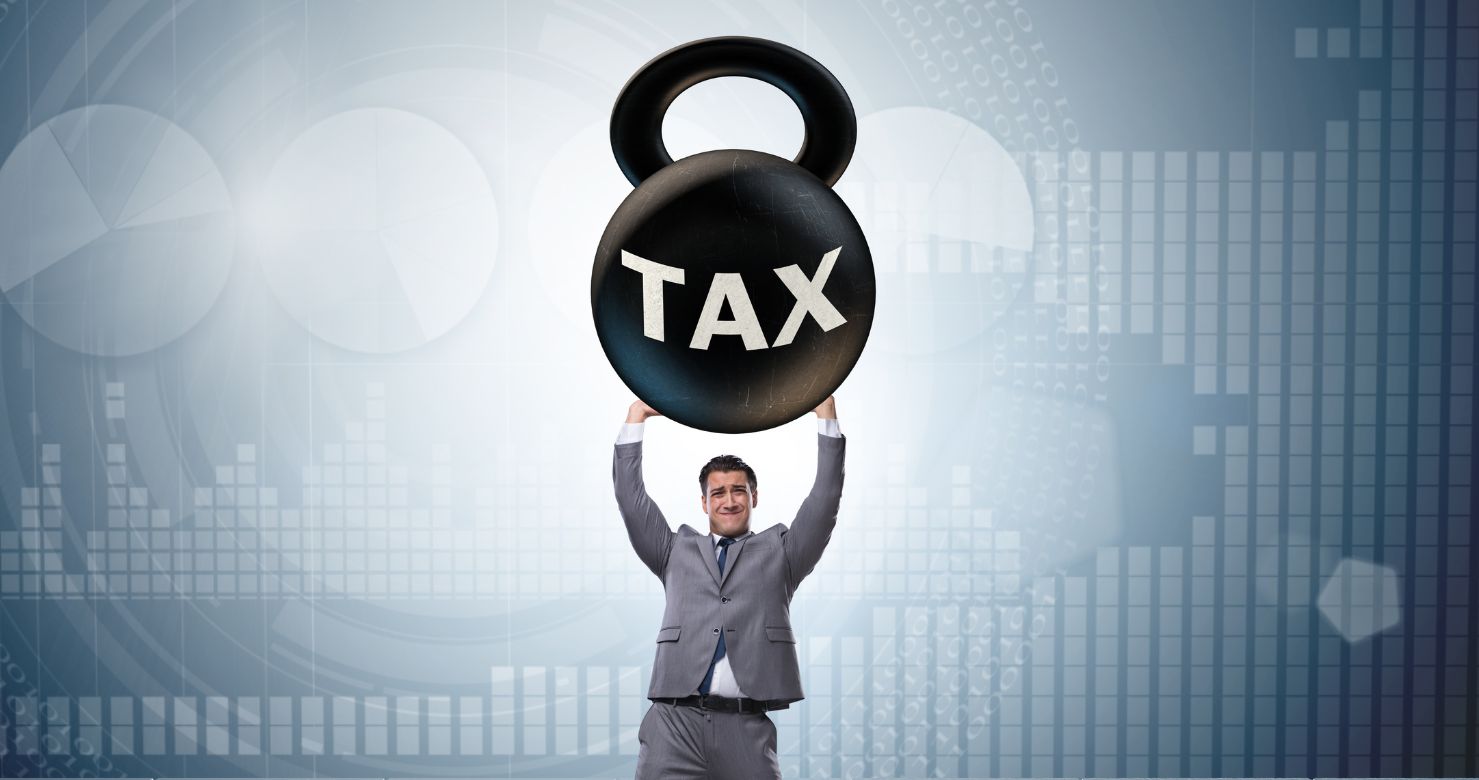
Income Tax Regimes NEW V/s OLD
As a taxpayer, you may be unsure which of the old and new income tax regimes is better, given the start of the new income tax regime. It may be necessary to compare and contrast the two regimes to determine which is most beneficial to the taxpayer. In this post, we shall compare and contrast the two tax systems.
TAX RATES ACCORDING TO OLD TAX REGIME
| Income Slab | Tax rates for Individuals below 60 years | Tax rates for Individuals between 60 & 80 years | Tax rates for persons above 80 years |
|---|---|---|---|
| Up to Rs. 2,50,000 | Nil | Nil | Nil |
| Rs. 2,50,001 to 3,00,000 | 5% | Nil | Nil |
| Rs. 3,00,001 to 5,00,000 | 5% | 5% | Nil |
| Rs. 5,00,001 to 10,00,000 | 20% | 20% | 20% |
| Above Rs. 10,00,000 | 30% | 30% | 30% |
TAX RATES ACCORDING TO NEW TAX REGIME
| Income Slab | Applicable Tax Rates |
|---|---|
| Up to Rs. 2,50,000 | NIL |
| Rs. 2,50,001 to 5,00,000 | 5% |
| Rs. 5,00,001 to 7,50,000 | 10% |
| Rs. 7,50,001 to 10,00,000 | 15% |
| Rs. 10,00,001 to 12,50,000 | 20% |
| Rs. 12,50,001 to 15,00,000 | 25% |
| Above Rs. 15,00,000 | 30% |
What is the difference between the old and new income tax regimes?
In two ways, the new tax system varies from the old. The new tax system features more slabs with lower rates, and the exemptions and deductions that were available to taxpayers under the old tax regime will no longer be accessible if a taxpayer chooses the new tax regime.
One of the most significant differences between these two regimes is the slab rates. Taxpayers in India must pay income tax based on a slab structure. Individuals’ average income is taken into account while determining the tax slab. This means that taxpayers with a high income will have to pay a higher tax rate.
Another significant distinction between the two is the possibility of lowering the tax. Under the new tax structure, no deductions will be allowed, as they were under the previous one. Taxpayers can lower their tax liability by taking advantage of deductions.
If you elect to go with the new tax system, keep in mind the following list of exemptions and deductions that you will have to give up as a taxpayer:
- Exemption from the travel allowance while on leave;
- Allowance for rent;
- A deduction of 50000 rupees is standard;
- Section 80TTA/TTB allows for a deduction.
- Entertainment allowance and employment/professional tax deductions (section 16);
- Section 24 of the tax code provides a deduction for interest paid on a home loan.
- Section 57 clause (iia) allows a deduction of Rs. 15000 from a family pension.
- Section 80D deduction for medical insurance premiums;
- Sections 80DD and 80DDB of the Internal Revenue Code provide tax benefits for those who are disabled.
- Section 80E provides a tax credit on interest paid on student loans, as well as a tax break on charitable gifts.
- Chapter VI-A deductions (Sections 80C, 80CCC, 80CCD, 80D, 80DD, and so on)
These deductions and exclusions are not available to taxpayers opting for the new income tax regime, however deductions under sections 80CCD and 80JJAA sub-section (2) are still available.
Pros and Cons of the Old and New Income Tax Regimes
Both income tax systems have advantages and disadvantages. They’ve been depicted in the following way:
Pros and Cons of the Old Regime
- It instills the habit of saving;
- Investments can be used to generate passive income.
- Investing can help you beat inflation;
- Less money to spend;
- There are fewer options for tax-saving investments;
- Liquidity is impacted by the investment lock-in period.
- It’s a pain to keep track of the proof of claimed deductions.
Pros and Cons of the New Regime
- Reduced tax rates and fewer compliance requirements;
- Increased discretionary income
- Liquidity increase
- Increased flexibility in constructing an investment portfolio that is based on objectives;
- Can’t take use of different tax breaks and exemptions;
- Due to the lack of exemptions, the total taxable amount will be higher than under the previous tax regime.
- There is no automatic system in place to encourage the habit of saving;
- Those with company income have fewer options in choosing the new tax regime.
Which tax system should you choose?
There is no definitive response to this question because the decision to opt for the new tax regime or not is based on a number of criteria such as current income, income composition, and savings habits, among others. Before selecting which regime is better for them, an individual should calculate their tax liability under both.
Both tax regimes offer advantages and disadvantages, as demonstrated above. If you want to claim deductions and exemptions, you can go with the old tax system, but you need to do a comparative analysis and evaluation beforehand. Because they do not have many tax-saving investments, the new tax regime has many supporters among the younger generation.
Changing from one regime to other
People may now be unsure whether they can switch between the two tax systems many times. If you’re a salaried employee, you can change jobs every year. Individuals with income from ‘Salary,’ ‘House Property,’ ‘Capital Gains,’ and ‘Other Sources’ may choose to switch between the two tax regimes every year, however, those with income from a business or profession can only revert to the old tax system once after opting for the new tax regime.
Conclusion
The new tax regime ostensibly promises lower tax rates and fewer hassles, but it does not allow for the exclusions and deductions mentioned above. Nonetheless, the decision is a personal one.
Share This post!

Income Tax Regimes NEW V/s OLD
As a taxpayer, you may be unsure which of the old and new income tax regimes is better, given the start of the new income tax regime. It may be necessary to compare and contrast the two regimes to determine which is most beneficial to the taxpayer. In this post, we shall compare and contrast the two tax systems.
TAX RATES ACCORDING TO OLD TAX REGIME
| Income Slab | Tax rates for Individuals below 60 years | Tax rates for Individuals between 60 & 80 years | Tax rates for persons above 80 years |
|---|---|---|---|
| Up to Rs. 2,50,000 | Nil | Nil | Nil |
| Rs. 2,50,001 to 3,00,000 | 5% | Nil | Nil |
| Rs. 3,00,001 to 5,00,000 | 5% | 5% | Nil |
| Rs. 5,00,001 to 10,00,000 | 20% | 20% | 20% |
| Above Rs. 10,00,000 | 30% | 30% | 30% |
TAX RATES ACCORDING TO NEW TAX REGIME
| Income Slab | Applicable Tax Rates |
|---|---|
| Up to Rs. 2,50,000 | NIL |
| Rs. 2,50,001 to 5,00,000 | 5% |
| Rs. 5,00,001 to 7,50,000 | 10% |
| Rs. 7,50,001 to 10,00,000 | 15% |
| Rs. 10,00,001 to 12,50,000 | 20% |
| Rs. 12,50,001 to 15,00,000 | 25% |
| Above Rs. 15,00,000 | 30% |
What is the difference between the old and new income tax regimes?
In two ways, the new tax system varies from the old. The new tax system features more slabs with lower rates, and the exemptions and deductions that were available to taxpayers under the old tax regime will no longer be accessible if a taxpayer chooses the new tax regime.
One of the most significant differences between these two regimes is the slab rates. Taxpayers in India must pay income tax based on a slab structure. Individuals’ average income is taken into account while determining the tax slab. This means that taxpayers with a high income will have to pay a higher tax rate.
Another significant distinction between the two is the possibility of lowering the tax. Under the new tax structure, no deductions will be allowed, as they were under the previous one. Taxpayers can lower their tax liability by taking advantage of deductions.
If you elect to go with the new tax system, keep in mind the following list of exemptions and deductions that you will have to give up as a taxpayer:
- Exemption from the travel allowance while on leave;
- Allowance for rent;
- A deduction of 50000 rupees is standard;
- Section 80TTA/TTB allows for a deduction.
- Entertainment allowance and employment/professional tax deductions (section 16);
- Section 24 of the tax code provides a deduction for interest paid on a home loan.
- Section 57 clause (iia) allows a deduction of Rs. 15000 from a family pension.
- Section 80D deduction for medical insurance premiums;
- Sections 80DD and 80DDB of the Internal Revenue Code provide tax benefits for those who are disabled.
- Section 80E provides a tax credit on interest paid on student loans, as well as a tax break on charitable gifts.
- Chapter VI-A deductions (Sections 80C, 80CCC, 80CCD, 80D, 80DD, and so on)
These deductions and exclusions are not available to taxpayers opting for the new income tax regime, however deductions under sections 80CCD and 80JJAA sub-section (2) are still available.
Pros and Cons of the Old and New Income Tax Regimes
Both income tax systems have advantages and disadvantages. They’ve been depicted in the following way:
Pros and Cons of the Old Regime
- It instills the habit of saving;
- Investments can be used to generate passive income.
- Investing can help you beat inflation;
- Less money to spend;
- There are fewer options for tax-saving investments;
- Liquidity is impacted by the investment lock-in period.
- It’s a pain to keep track of the proof of claimed deductions.
Pros and Cons of the New Regime
- Reduced tax rates and fewer compliance requirements;
- Increased discretionary income
- Liquidity increase
- Increased flexibility in constructing an investment portfolio that is based on objectives;
- Can’t take use of different tax breaks and exemptions;
- Due to the lack of exemptions, the total taxable amount will be higher than under the previous tax regime.
- There is no automatic system in place to encourage the habit of saving;
- Those with company income have fewer options in choosing the new tax regime.
Which tax system should you choose?
There is no definitive response to this question because the decision to opt for the new tax regime or not is based on a number of criteria such as current income, income composition, and savings habits, among others. Before selecting which regime is better for them, an individual should calculate their tax liability under both.
Both tax regimes offer advantages and disadvantages, as demonstrated above. If you want to claim deductions and exemptions, you can go with the old tax system, but you need to do a comparative analysis and evaluation beforehand. Because they do not have many tax-saving investments, the new tax regime has many supporters among the younger generation.
Changing from one regime to other
People may now be unsure whether they can switch between the two tax systems many times. If you’re a salaried employee, you can change jobs every year. Individuals with income from ‘Salary,’ ‘House Property,’ ‘Capital Gains,’ and ‘Other Sources’ may choose to switch between the two tax regimes every year, however, those with income from a business or profession can only revert to the old tax system once after opting for the new tax regime.
Conclusion
The new tax regime ostensibly promises lower tax rates and fewer hassles, but it does not allow for the exclusions and deductions mentioned above. Nonetheless, the decision is a personal one.





